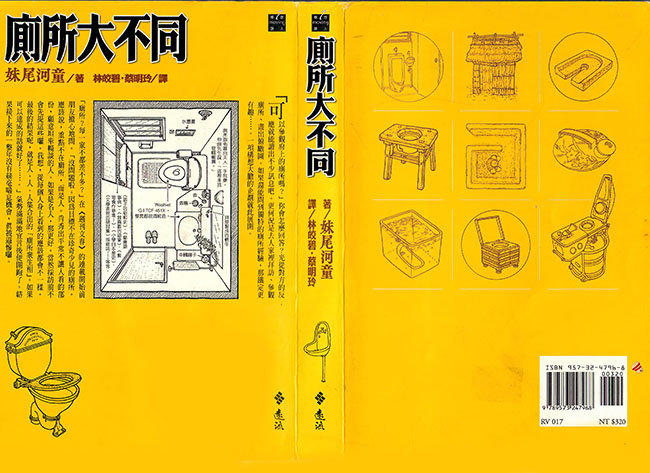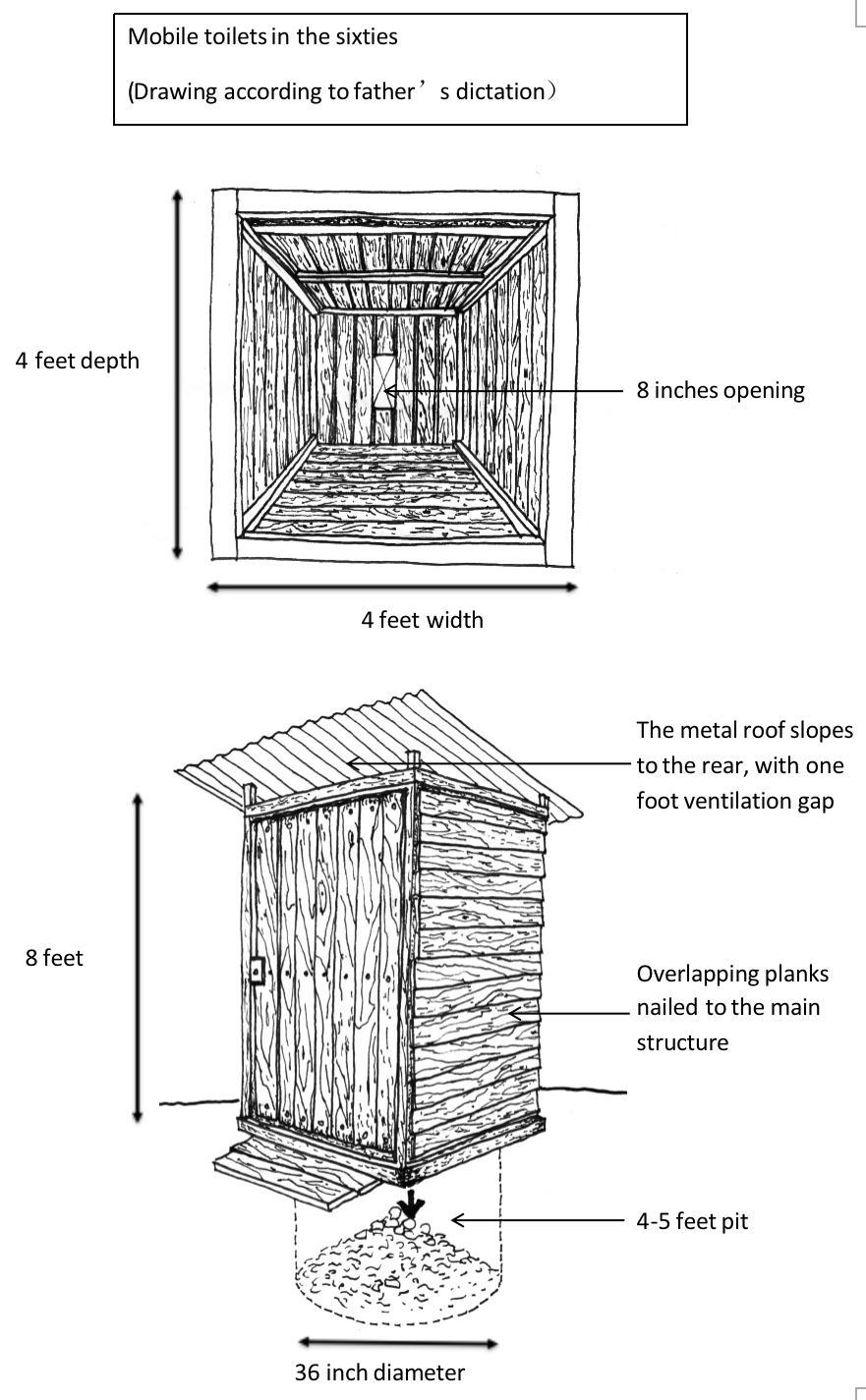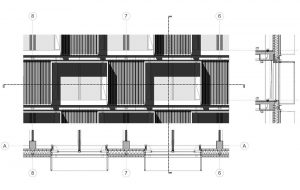Article by: XiHeSan (西河。山)
Living in the city, prefer kampung life; discovered cognitive to space when exploring the kampung during childhood.
Published on: Intersection FLASH Feature 3/2020-2021 Issue
After reading Meiwei Kappa’s “Toilet Difference”, I was reminded of the unforgettable experience of the toilets in my childhood, and I felt the urge to document this memory. When I was young, I went to my grandmother’s house at The Old Klang Road in Kuala Lumpur, I was bound to use the cess-pit latrine. Why is it called a cess-pit? Because that’s where the waste is disposed of; in a hole within a latrine.

There is a saying in Cantonese 新屎坑,三日香 [new cess-pit, three days incense]. The freshness of a newly built latrine can only last for three days. That’s why when I was young, I’d try not to patronize the ‘cess-pit’ unless I really had to.
The evolution of the toilet
Grandma’s house was at a kampong near the Klang River, and the sewage system was very much dependent on the residents’ abilities during this developing era. Therefore, in the 1960s, every household would dig a pit of about 4 to 5 feet in the open area by the river or pond, a movable roofless latrine would then lifted into place over the pit. After the first pit was full, a new pit would be dug nearby, then the same latrine structure would be relocated to this spot. The old pit would then filled in with sand and planted with small plants or fruit trees~. The fruits that grow will be particularly large. It is said that this is a method to identify the location of the old pit, which is very environmentally friendly.


In the 1970s, there were finally public toilets, and they were divided into two types: sit on stilt type with locks and the liner row type without locks, both of which were jointly built by several households living nearby. Both types of public toilets are far away from residents’ houses to avoid contamination to the water sources (well water). The toilets were still built by the river or lake, the faeces would be washed away following the river flow or directly discharged into the lake. Most toilets in the kampung were lifted with stilts, three meters from the riverbank, two meters away from the riverside, connected by a wooden footbridge. The materials are wooden walls, metal roofs and wooden doors. There is a one-foot ventilation gap between the roof and the wooden walls, allowing the bad smell to be quickly dissipated from the toilet. In the 1970s, the toilets did not provide tap water. Everyone had to self provide water and toilet paper from their homes. Anyone who wants to use the toilet must ask the owner of the toilet for the key, It was a common practice to leave a few cents to the owner when borrowing the key.
In the 1980s, some public toilet facilities were upgraded, and there were also water taps nearby, connecting from the tank that collects rainwater for flushing and washing, which was much more convenient. There is a small bucket tied to the door for donation (probably for maintenance and repair). There is also a water bucket, but toilet paper is still on a self provide basis.




Experiencing the toilet
I still remember being upset when I was little, patronizing the ‘cess-pit’ was really difficult for me. I had to carry a heavy bucket in one hand, toilet paper, on the other hand, ask for a key, running here and there just to get to use the toilet. The journey seems like mission impossible especially in urgent cases, the route always felt longer than normal. When I arrive, I would pray to the gods that no one using it (because two or three families keep the keys at the same time). If it was being used, there were two options: go to the one further away or go to a nearby open field to solve it, by finding a branch to dig a hole, and then push the excrement into the hole and then bury it with sand.
Crossing the creaking and crumbling plank bridge was another challenge for me. The overall structure of the toilet seems unstable. Even if I was lucky enough to reach the unoccupied toilet, it still took me some time to unlock the door. After all these hustles, if I had not soiled my pants by then, I have passed the first challenge.
The toilet was a squat type, with footrests on both sides, and you can look directly to the bottom from the pit. The more disgusting thing that could be found were traces of excrement rubbed on the wall, probably left by someone who forgot to bring toilet paper. When going to the toilet, you must pinch your nose and aim at the pit. Sometimes flies would fly out of the pit, and there would be worms in the toilet. Although it smells bad, what I can’t wait for was that when the poop drops into the river, I would immediately look into the ‘pit’ and observing a group of fishes scrambling to eat. This was the greatest joy for me going to the toilet!
The design and positioning of the toilet are based on practical considerations. For example, its distance above the river surface was to prevent the dirt from splashing on the buttock. When I was a child, this three-meter distance was the reason for my timidity. I imagined that I accidentally missed my footing and fell in – I wonder if I will be swallowed by fish or faeces. However, neither of these two scenarios would happen because these toilets were built at least three meters away from the shore, taking into account that the faeces could drop directly into the river. Only occasionally when the river is at low tide, a lot of excrement piled up makes it smelly. It must be a very thrilling experience for the residents here to poop at night.
Later, because of this unforgettable and valuable experience, I built a latrine-like toilet in my backyard, a stand-alone hut, detached from the house, with a natural ventilation gap with simple metal roof, allowing rainwater to splash in and sunlight to enter, minimal finishes, and no washbasin. Aside from reintroducing its practicality, it reminds many people of their previous toilet experience, especially my father. When it was completed, he was really excited and brought back endless memories. He will definitely dominate this toilet every time he pays me a visit from Kuala Lumpur. Doesn’t that prove the success of my design!
End.






